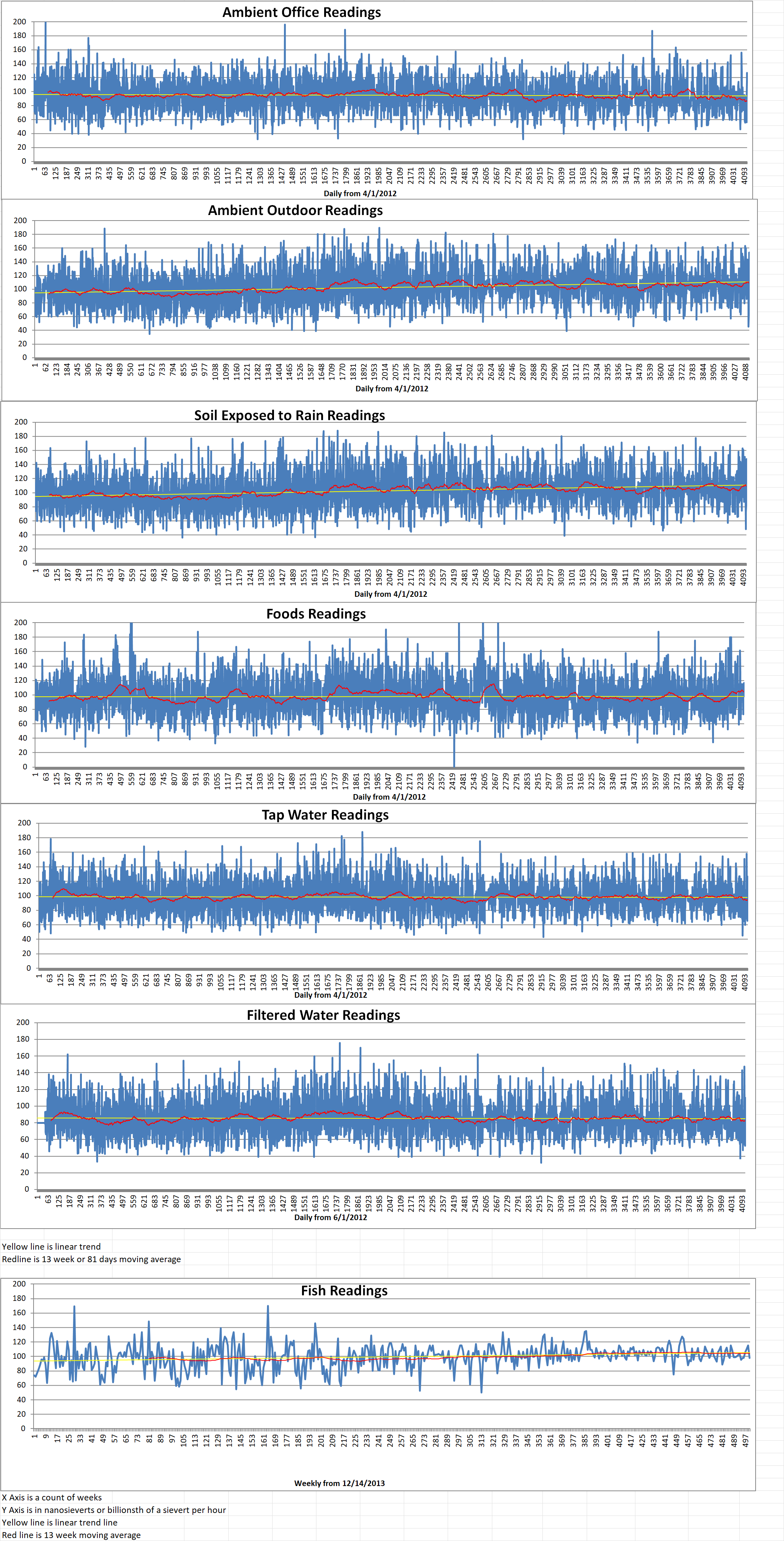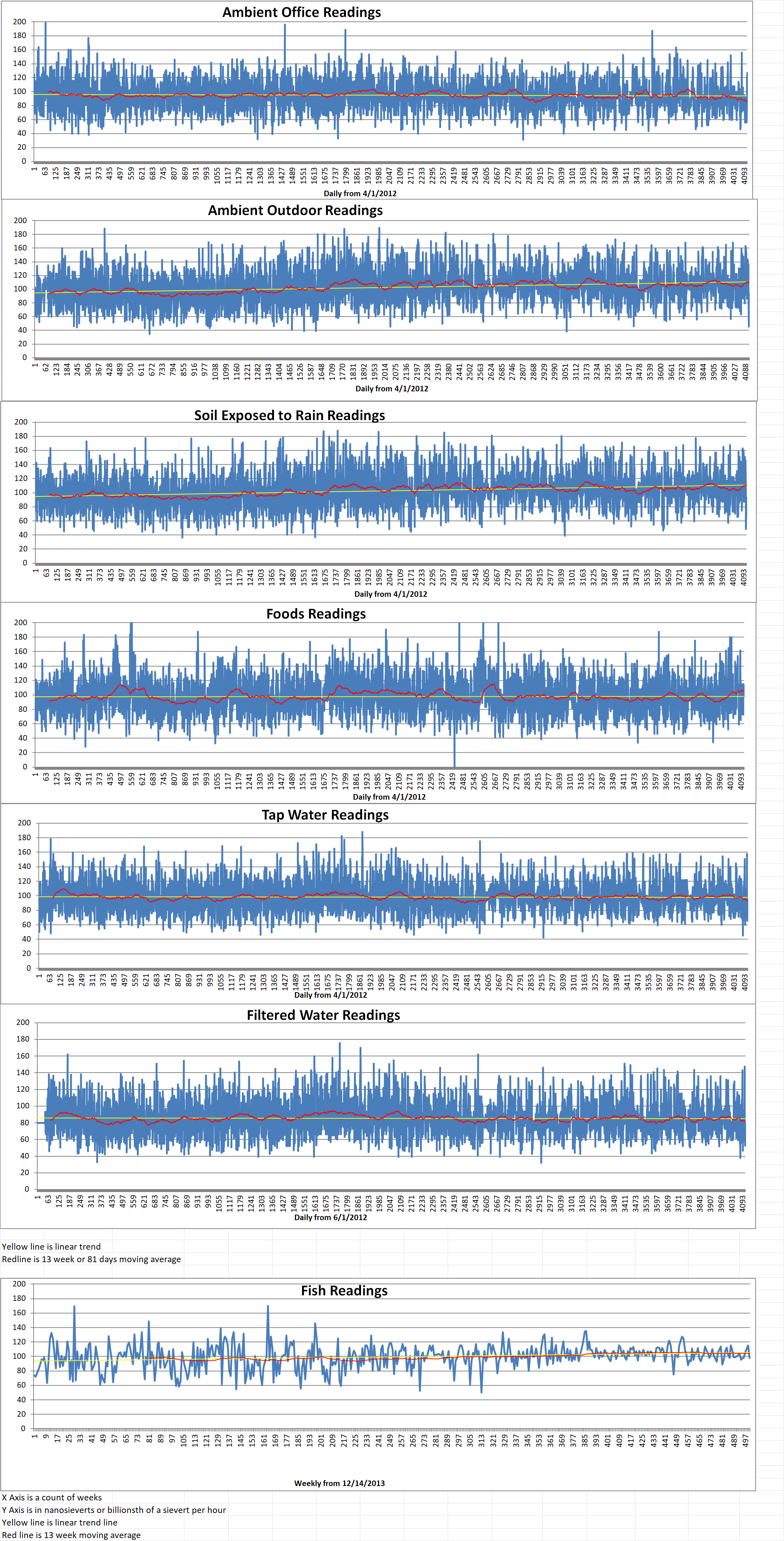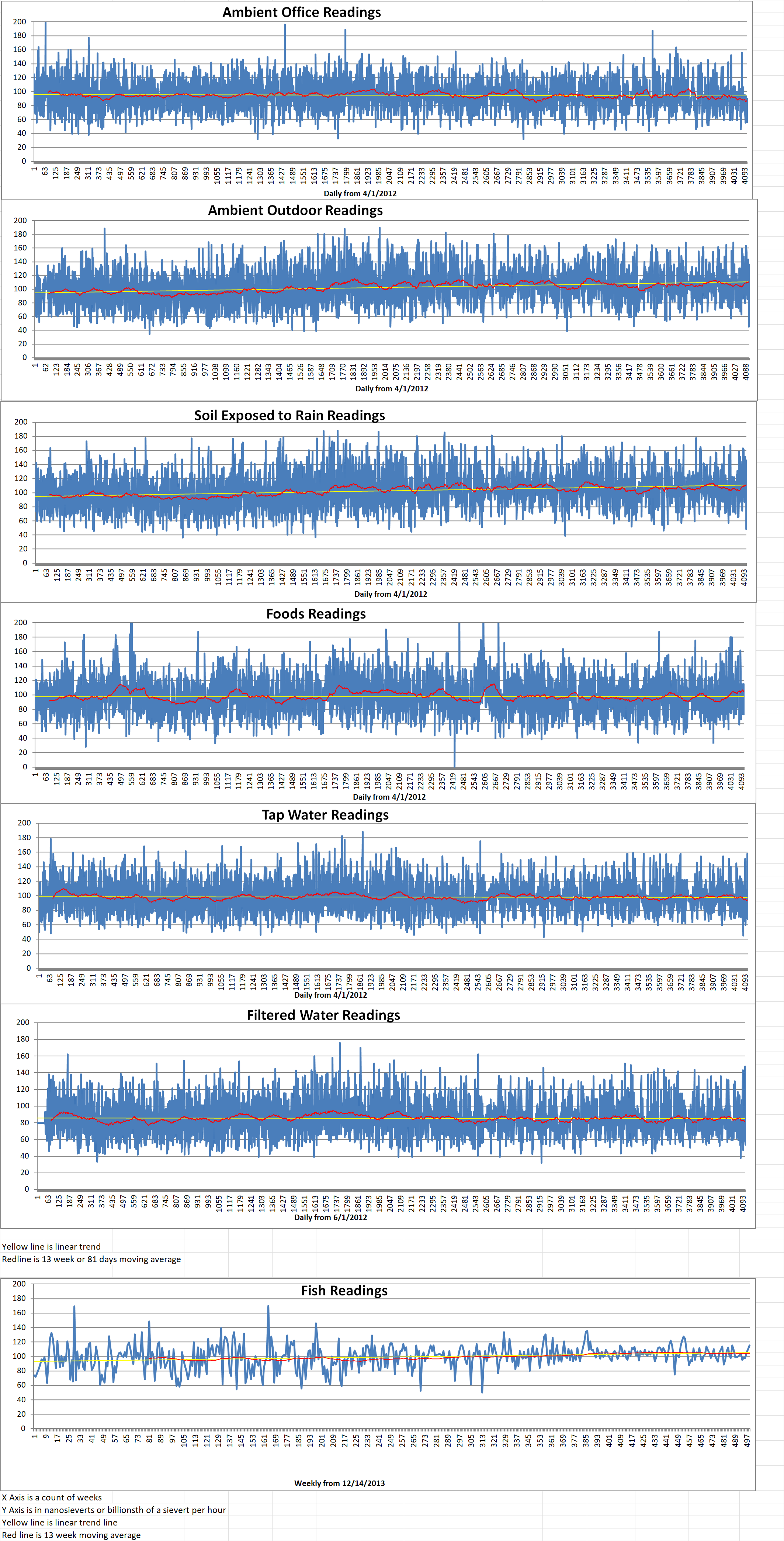Japan’s Nuclear Regulation Authority (NRA) has decided to lift an administrative order imposed on Tokyo Electric Power Company (TEPCO) in 2021 that prohibited the company from moving nuclear fuel or loading it into reactors at the seven-unit Kashiwazaki-Kariwa nuclear power plant.
TEPCO applied to NRA for approval of its design and construction plan for Kashiwazaki-Kariwa units 6 and 7 in September 2013. It submitted information on safety upgrades across the site and at those two units to the NRA. These one thousand three hundred and fifty-six megawatt Advanced Boiling Water Reactors began commercial operation in 1996 and 1997. They were the first Japanese boiling water reactors to be put forward for restart following the Fukushima nuclear disaster in 2011.
In 2017, TEPCO received NRA permission to restart units 6 and 7. Local government consent must be acquired before the reactors can be restarted.
In January 2021, TEPCO notified the NRA that a contractor had accidentally damaged intruder detection equipment at the Kashiwazaki-Kariwa site. The company informed the NRA in February that some of the functions related to this equipment had been repaired. TEPCO said it had also found malfunctions in intruder detection equipment at 12 locations on the site and that alternative measures had been implemented. TEPCO told the NRA that three further locations experienced equipment malfunctions. It also reported the unauthorized use of an ID card.
The NRA informed TEPCO in March 2021 that a preliminary assessment had rated the significance of these security lapses as ‘red’. This rating is the highest level on its four-point scale of risks in safeguarding nuclear material. This rating suggests a large impact on safety functions or performance. The NRA decided to “suspend for the time being” its pre-use inspections of the plant. These are required for TEPCO to load fuel into Kashiwazaki-Kariwa unit 7.
In April, the NRA issued an administrative order to TEPCO prohibiting it from moving nuclear fuel at the plant until improvements in security measures there have been confirmed by additional inspections.
At the 27 December meeting where the NRA decided to allow TEPCO to restart the requested reactors, the NRA decided to lift the administrative order after inspections confirmed that problems had been dealt with at the Kashiwazaki-Kariwa plant, in Japan’s Niigata Prefecture.
Kashiwazaki-Kariwa was not affected by the March 2011 earthquake and tsunami which damaged TEPCO’s Fukushima Daiichi plant. The plant’s reactors were previously all offline for two to three years following the 2007 Niigata-Chuetsu earthquake, which caused damage to the site but did not damage the reactors themselves. While the units were offline, additional work was carried out to improve the plant’s earthquake resistance.
TEPCO has completed work at the other idled units at Kashiwazaki-Kariwa. It is now concentrating its resources on units 6 and 7 while it deals with the clean-up at Fukushima Daiichi. Those two units have been offline for periodic inspections since March 2012 and August 2011, respectively. Restarting those two units would increase the company’s earnings by an estimated JPY100 billion (USD706 million) per year.
TEPCO said , “While going back once again to the reflections and lessons learned from the Fukushima Daiichi Nuclear Power Station Accident, we will continue to engage in activities in which all personnel voluntarily engage as we strive to become a nuclear power operator that is trusted by the people of the region and society as a whole.”
Blog
-

Nuclear Reactors 1332 – Japanese Regulatory Allow TEPCO To Restart Two Reactors
-
Nuclear News Roundup January 01, 2024
New nuclear power ‘necessary’ to meet Michigan’s climate goals mlive.com
Russia’s Nuclear Deterrent Command Center Imperiled by Winter Freeze newsweek.com
EDF to invest £1.3 bn in UK nuclear power stations energy.economictimes.indiatimes.com
France boosts its nuclear energy plan with eight more large reactors balkangreenenergynews.com
-

Geiger Readings for January 01, 2024
Ambient office = 115 nanosieverts per hour
Ambient outside = 153 nanosieverts per hour
Soil exposed to rain water = 148 nanosieverts per hour
Red bell pepper from Central Market = 116 nanosieverts per hour
Tap water = 126 nanosieverts per hour
Filter water = 110 nanosieverts per hour
-

Geiger Readings for December 31, 2023
Ambient office = 127 nanosieverts per hour
Ambient outside = 94 nanosieverts per hour
Soil exposed to rain water = 93 nanosieverts per hour
Pineapple from Central Market = 97 nanosieverts per hour
Tap water = 94 nanosieverts per hour
Filter water = 80 nanosieverts per hour
-
Nuclear News Roundup December 31, 2023
EIA program submitted for Olkiluoto 1 and 2 world-nuclear-news.org
EDF Energy aims to extend life of UK nuclear plants bbc.com
3-meter tsunami reached nuclear plant after powerful Japan quake japantoday.com
Coldwater Creek to finally have warning signs after decades of nuclear contamination komu.com
-

Geiger Readings for December 30, 2023
Ambient office = 119 nanosieverts per hour
Ambient outside = 80 nanosieverts per hour
Soil exposed to rain water = 84 nanosieverts per hour
Green onion from Central Market = 108 nanosieverts per hour
Tap water = 65 nanosieverts per hour
Filter water = 53 nanosieverts per hour
Dover Sole from Central = 104 nanosieverts per hour
-
Nuclear News Roundup December 30, 2023
Advocates sue to block trail through Rocky Flats, citing ‘plutonium plume’ kdvr.com
Lawsuit aims to block trail through old Colorado nuclear site kdvr.com
Committee calls for Xcel Energy to replace closing Colorado coal plant with advanced nuclear power-eng.com
The Palisades Nuclear Plant takes small steps toward decommissioning wmuk.org
-

Nuclear Reactors 1331 – Estonia Is Considering Small Modular Reactors
The Estonian National Working Group on Nuclear Energy (NEPIO) recommends the construction of a nuclear power plant in Estonia, as the introduction of nuclear energy would contribute to Estonia’s climate objectives, security of energy supply and stability of the energy system. The NEPIO’s final report found that nuclear energy will boost Estonia’s renewable energy.
Although it requires thorough preparation, the NEPIO believes that with timely planning, sufficient funding, political and public support, the introduction of nuclear energy in Estonia is feasible, the press service of the Climate Ministry said.
Over the past two and a half years, the NEPIO has been analyzing the potential of small modular reactors (SMRs), following the International Atomic Energy Agency’s (IAEA) roadmap for the development of national nuclear infrastructure, which identifies 19 key issues for the deployment of nuclear energy.
Antti Tooming is the deputy undersecretary of the Ministry of Climate and head of the NEPIO. He said that nuclear energy has proven its worth in many countries around the world. He added that “Nuclear energy has the potential to ensure a stable energy supply in Estonia for future generations.”
Tooming said that global interest in nuclear energy, especially SMRs is growing. He emphasized that if the state chooses nuclear power, it must not delay emission reductions or reduce renewable energy generation and storage capacity.
Without prior experience, introducing nuclear power to a country takes years of preparation and 9-11 years before it can be added to the grid. Estonia should begin to prepare the legislative framework, acquire capabilities, and begin siting if nuclear power is chosen.
A country without experience in the use of nuclear power must prepare for years of work before starting to generate electricity from a nuclear facility. If Estonia decides to go with nuclear power, it should begin legal preparation and competency development. A new national nuclear authority must be established in order to regulate nuclear energy safety which will need to employ a total of about 80 personnel.
The climate and radiation department of the Environmental Board will be absorbed into the new agency. It will have to hire more than 60 additional personnel, including several dozen nuclear specialists, some of whom would have to come from abroad, at least during the initial transition period.
As the private sector finances the construction of a nuclear power plant, the state’s role is to create a framework that allows the use of nuclear energy. The total cost of the framework from the implementation of the nuclear program to the start of electricity generation, i.e. over a period of 9-11 years, would be in the order of 80 million dollars.
There will also be additional costs related to creating emergency response capabilities, the precise amount of which will be determined later. Implementing nuclear energy would also generate additional revenue for the state. This will most notably be in the form of increased revenue from taxes and economic stimulus, which would outweigh the expenses of establishing and maintaining the national framework. SMRs with a capacity of fewer than 400 megavolt amperes would be suitable in Estonia, according to the final evaluation.
The government and the Riigikogu will discuss whether or not to launch a nuclear power program in the first months of 2024. The final report of the NEPIO was published on the website of the Ministry of Climate on December 30 at 10 a.m. -
Nuclear News Roundup December 29, 2023
Canadian collaboration to explore isotope production for space exploration world-nuclear-news.org
Nuclear icebreakers help Northern Sea Route to record year world-nuclear-news.org
“Dutch engineer carried out Iranian nuclear sabotage”: VK dutchnews.com
Japan earthquake causes nuclear power station oil leak news.sky.com
-

Geiger Readings for October December 29, 2023
Ambient office = 90 nanosieverts per hour
Ambient outside = 65 nanosieverts per hour
Soil exposed to rain water = 73 nanosieverts per hour
Mini cucumber from Central Market = 114 nanosieverts per hour
Tap water = 68 nanosieverts per hour
Filter water = 54 nanosieverts per hour
